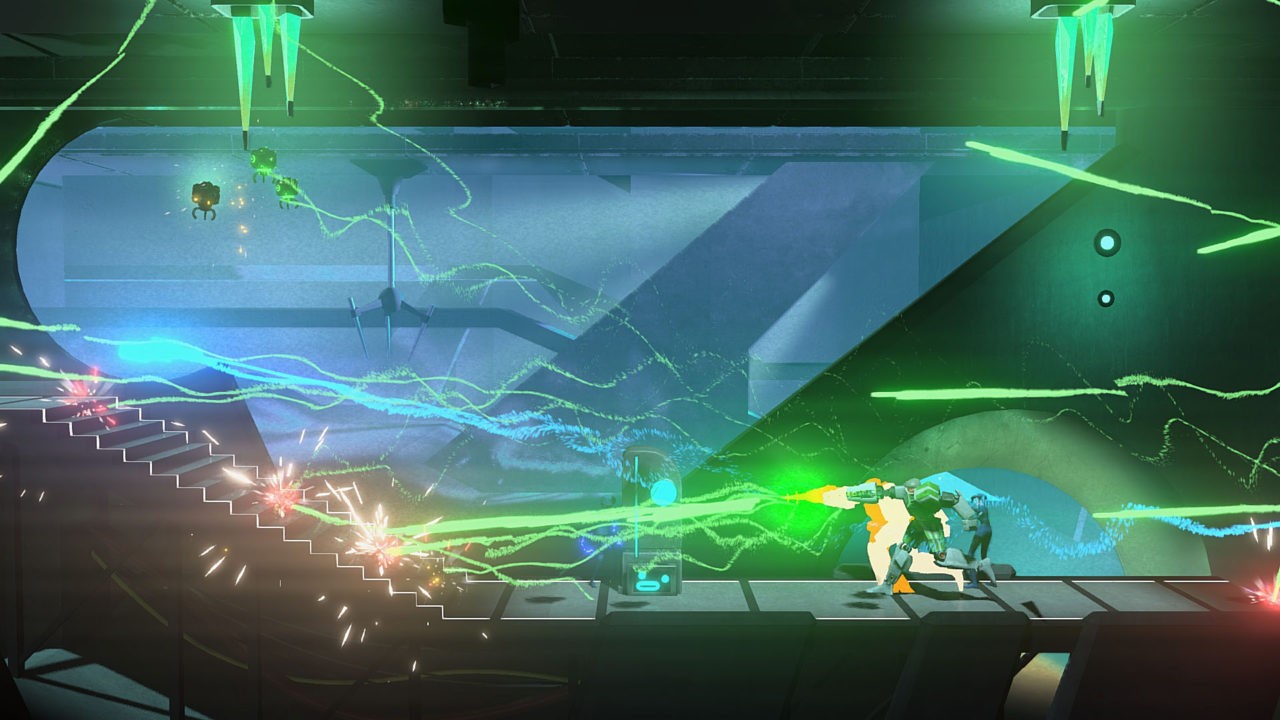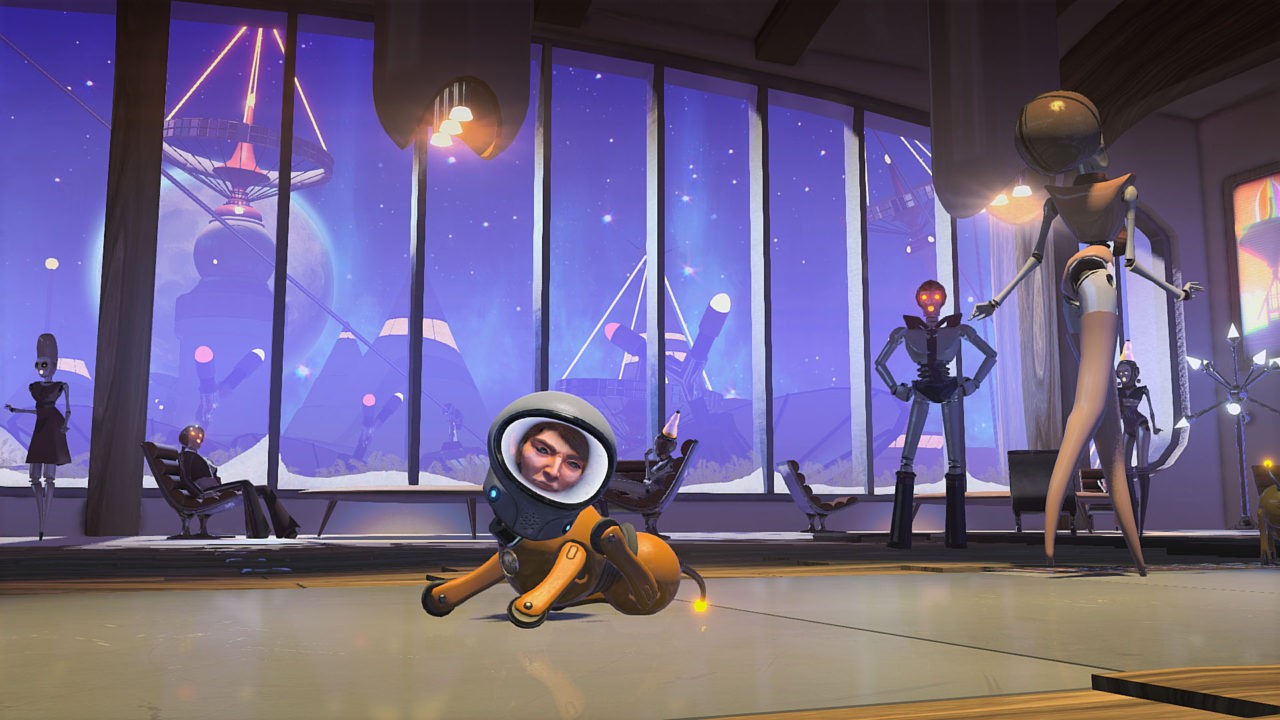Double Fine’s Headlander is a trippy 70’s romp through “Metroidvania” gameplay and a worthwhile purchase for those who don’t mind its simplified take on the subgenre.
Both Metroid and Castlevania introduced us to the idea of “open world” platforming, rendering their expansive two-dimensional mazes as environments tiered by your own capabilities. While you might have begun your journey as a bare-bones vampire slayer or bounty hunter, a wealth of upgrades, new equipment, and additional skills allowed for ever-expanding feats of heroism. Those incremental upgrades allowed you to learn the game step by step, gently pushing you from one challenge to the next.
At the same time, familiar spots held new secrets, only accessible with the help of your newfound strength. Going back through places you’d been was a thrilling power-trip laden with even more rewards. It was a curiously addictive experience, both deeper and more organic than virtually anything else available. The “Metroidvania” was born, an essential influence on everything from Grand Theft Auto to Mega Man.
Double Fine’s latest dives headfirst (sorry, sorry) into that legacy, with generally positive results as you control the disembodied head of the last human in the universe in a world ruled by robots.

Headlander sports an unapologetic 1970’s sci-fi vibe, from the visual effects to the character designs. The space station in which your adventure takes place is every trope of cheesy 70’s nostalgia, bottled up and vacuum-sealed. It’s the sort of game in which androids can be found splayed out and tripping on shag carpet, or trying to describe the magic of a giant glowing crystal. There’s a button used almost exclusively to allow your various bodies to dance.
Progression is tied to those bodies, from which your floating head will leap to possess whatever robot form is necessary to accomplish varying objectives. For the most part, you’ll be hopping onto various guards, because those are the guys with the laser-gun-arms. Lasers solve a lot of problems very quickly.
Unfortunately, combat is one of the most streamlined bits of the Headlander experience. For the most part, guards are only differentiated by the patterns of their weapon fire and the colors of uniforms that allow them access to corresponding security doors. There’s a cover system, but it’s limited and mostly inessential.

Upgrades are tied to your floating head itself, allowing for faster flight, a stronger vaccuum with which to pop the heads from the shoulders of your foes, and more hitpoints. Additional touches allow for benefits like shields that redirect deadly beams, but because the upgrades apply to the head itself, they are by definition limited to the head’s abilities.
Headlander‘s most grievous sin is that it doesn’t generally make you feel any stronger as you progress than you did in the beginning. While you can do more, it generally only applies to puzzles made specifically for that purpose. And without stronger bodies around, your only real advantage is being able to move more quickly through areas you’ve mastered. Moving quickly does help with side quests, which are generally fetch-oriented tasks that require a decent amount of backtracking.
While it’s easy to criticize Headlander for what it’s not, that would be a grace disservice to what it is. The puzzles, while generally fairly simplistic, are still a lot of fun. Buzzing around as a disembodied head stays amusing from the beginning to the end. Interacting with the multitude of space station denizens is always funny and often hilarious. My personal highlight was a self-serious, hyper militant squadron of tiny housekeeping droids.

Headlander lives and dies on its personality. You’ll come for the jokes, but you’ll stay for the… more jokes. If that’s not your bag, you might find the experience a wee bit empty, once the novelty of the mechanics themselves has run dry.
In the end, I genuinely enjoyed my time with the game. It doesn’t overstay its welcome, and its generously priced for the amount of entertainment you’ll get. The writing is spot-on, like most things from Double Fine. It’s virtually free of bugs and hearkens back to a style of gameplay that we get very little of in the current market. It sounds absolutely brilliant, oozes an almost cringeworthy level of 70’s sci-fi style, and is intuitive to control with either mouse and keyboard or a controller. There are no real faults to the game itself, so long as you’re not dismayed by the lack of satisfying combat.
I’m happily recommending this purposefully corny jaunt through sci-fi and gaming conventions of yesteryear, with the caveat that it banks on style over substance. This is a game that thoroughly demonstrates itself in the trailers, so it’s relatively easy to decide whether it’s something you’ll enjoy. I genuinely liked it, but I think I’d love a more fleshed-out sequel.
Follow Nate Church @Get2Church on Twitter for the latest news in gaming and technology, and snarky opinions on both.

COMMENTS
Please let us know if you're having issues with commenting.